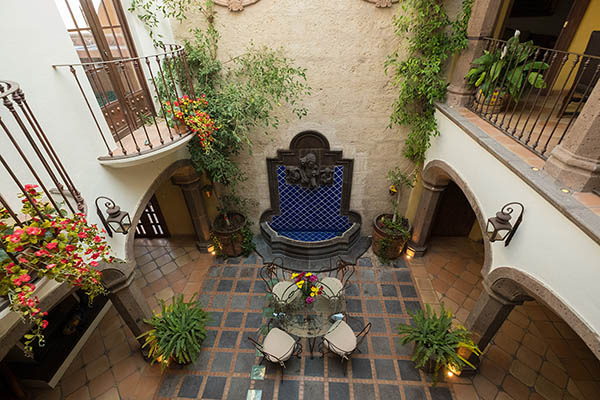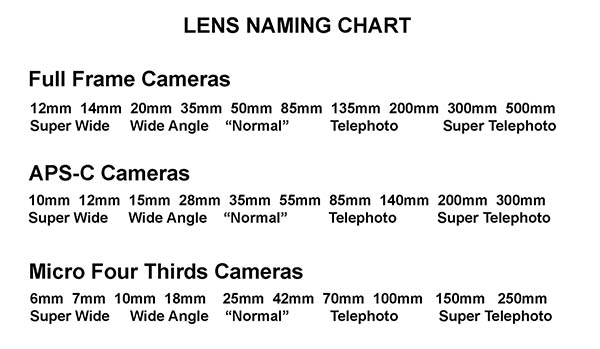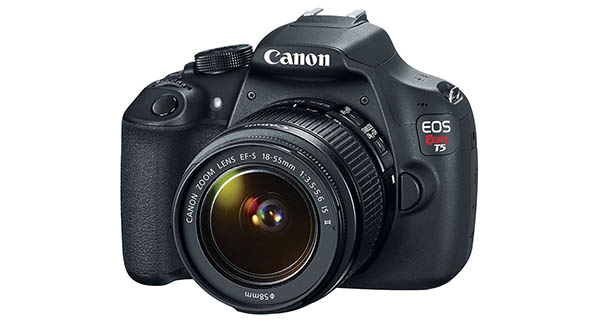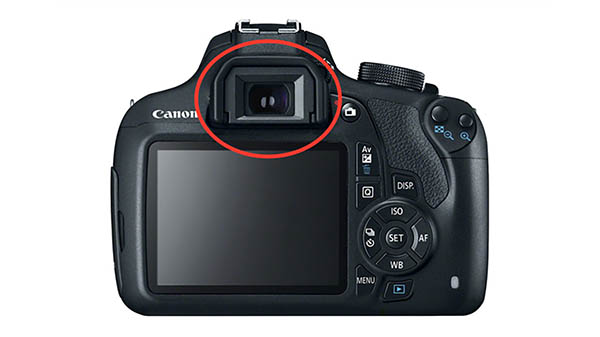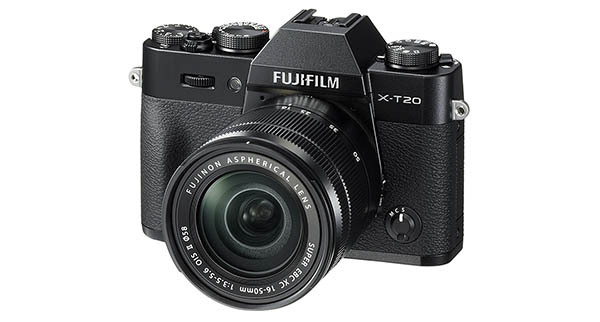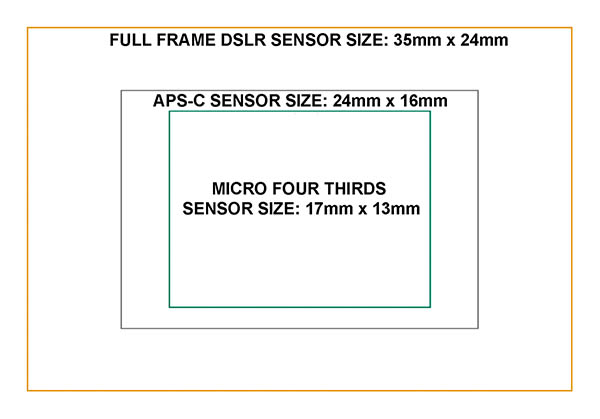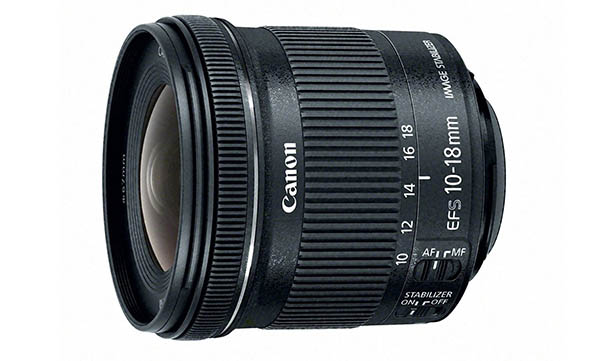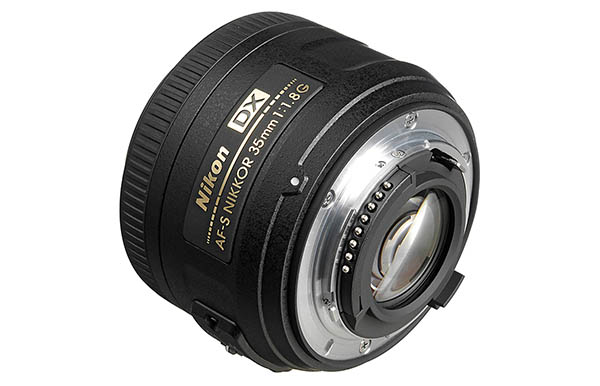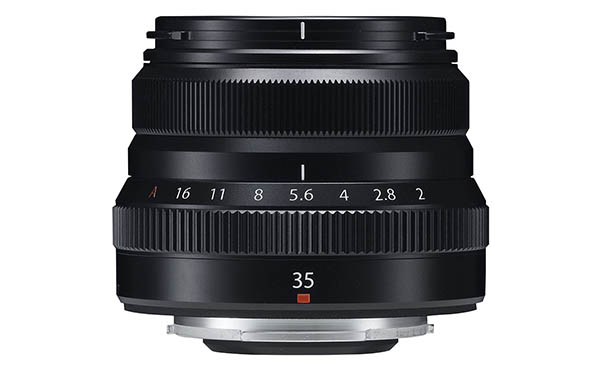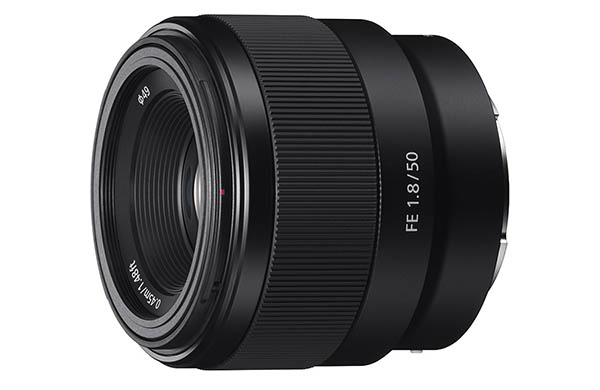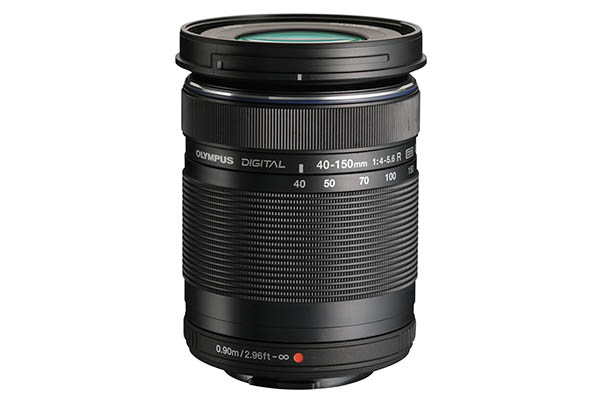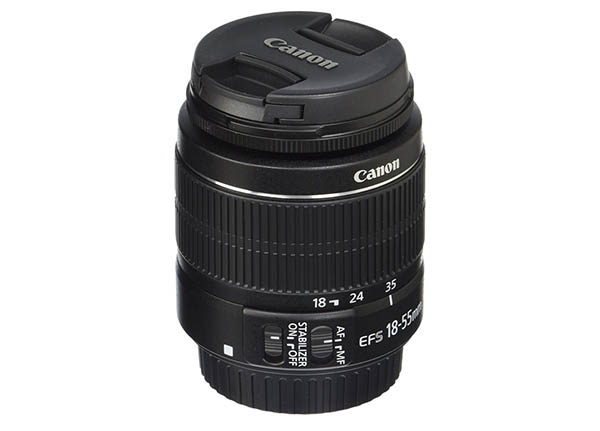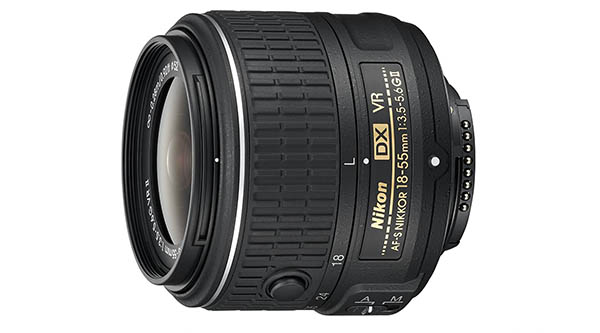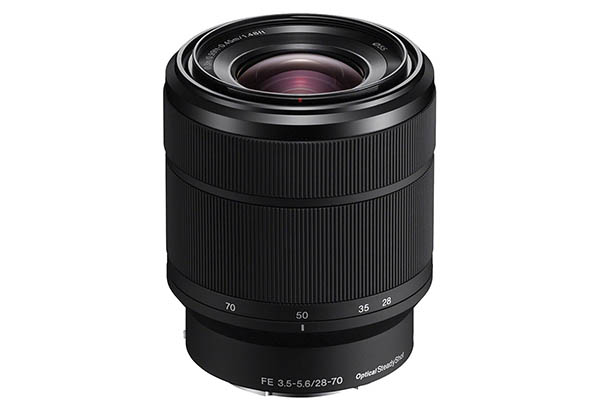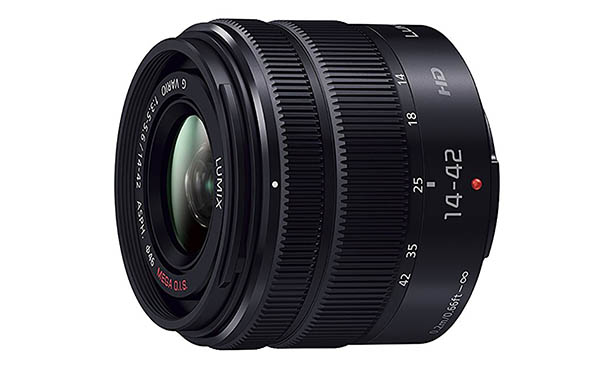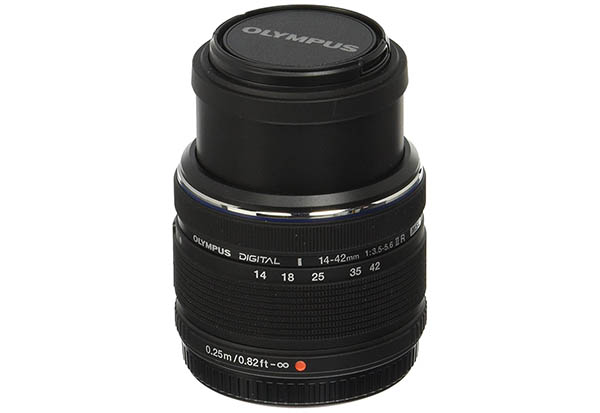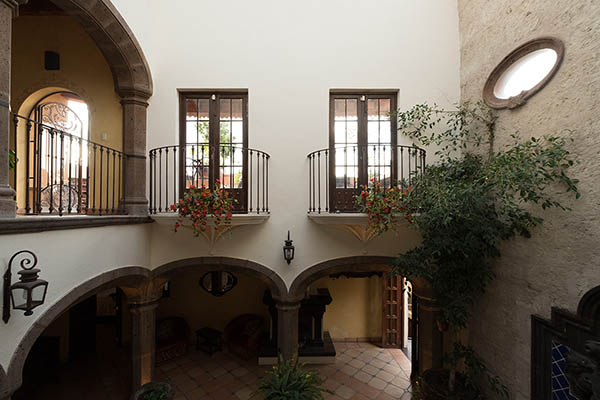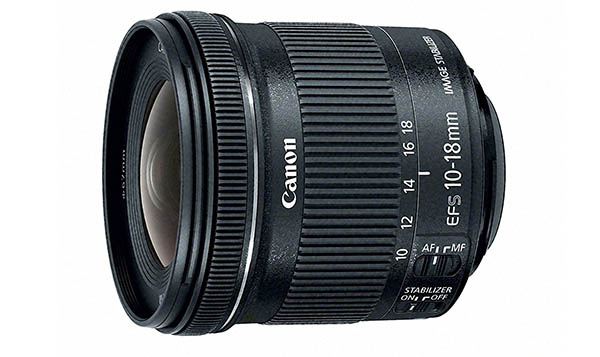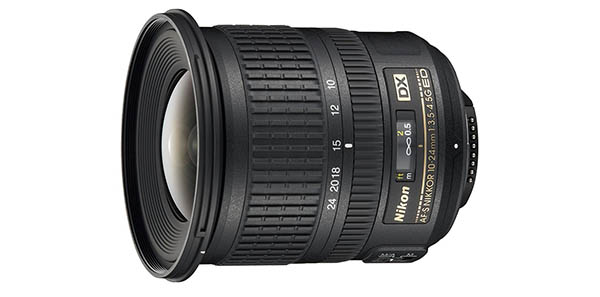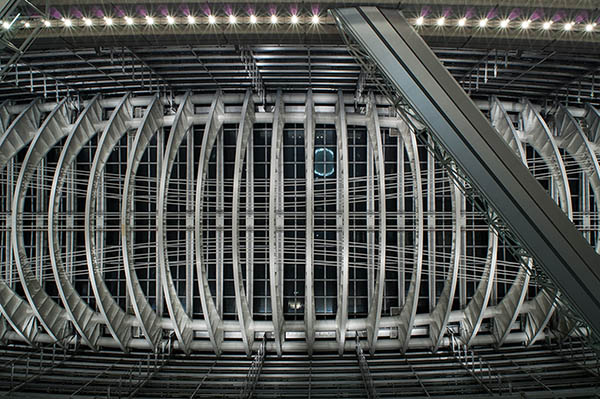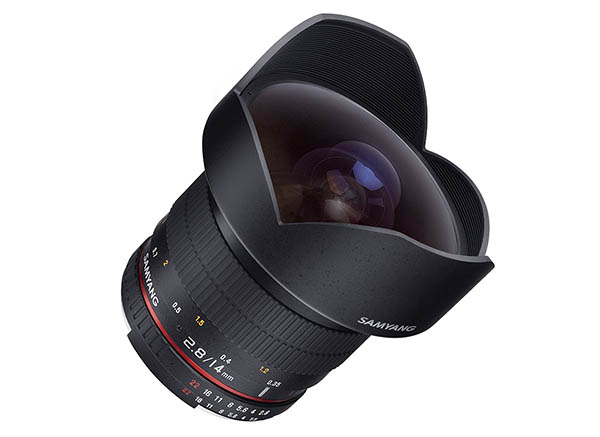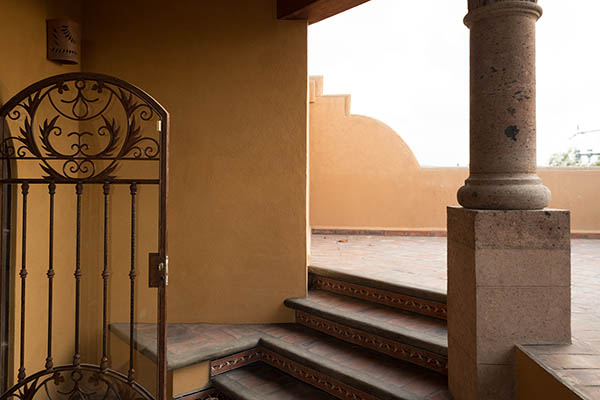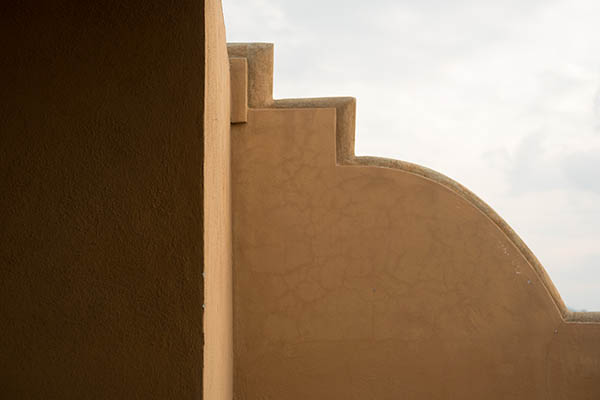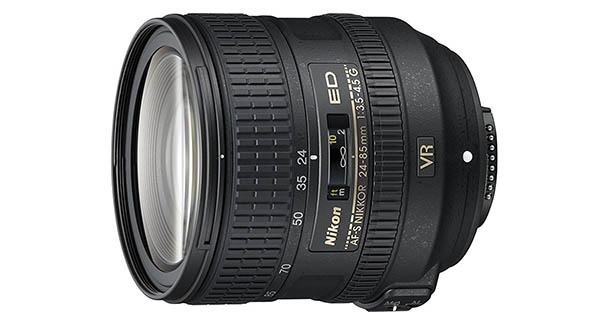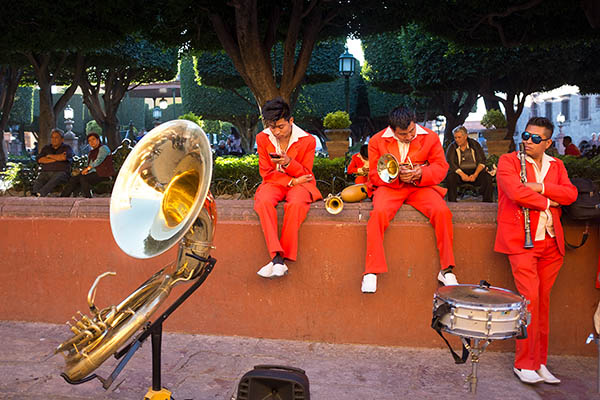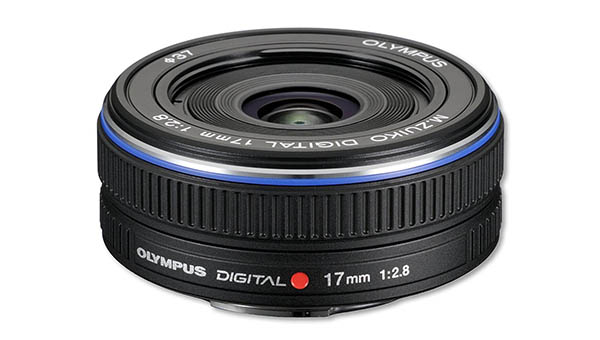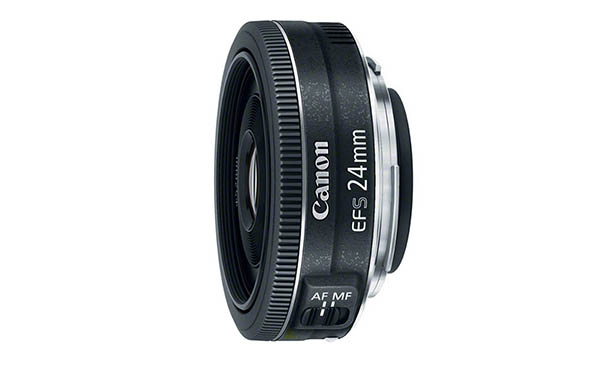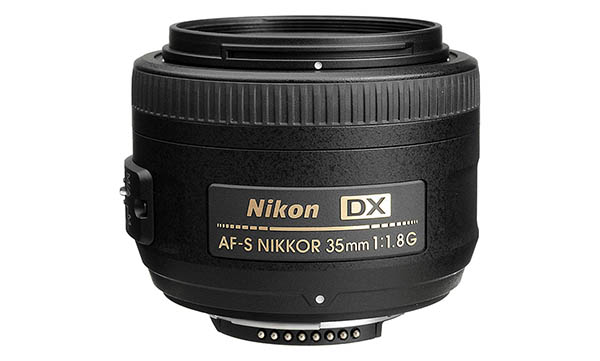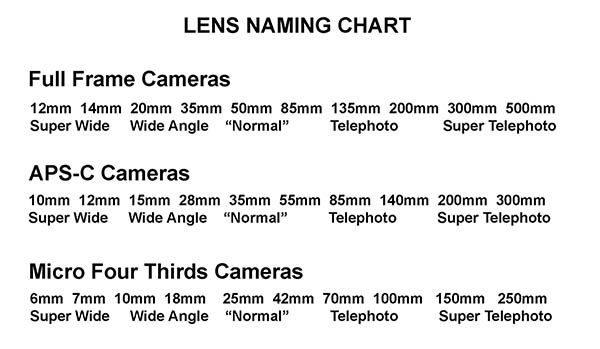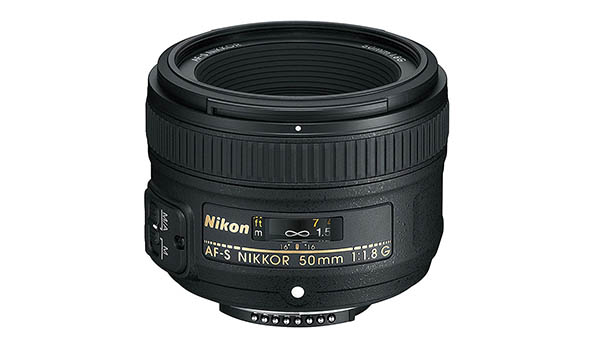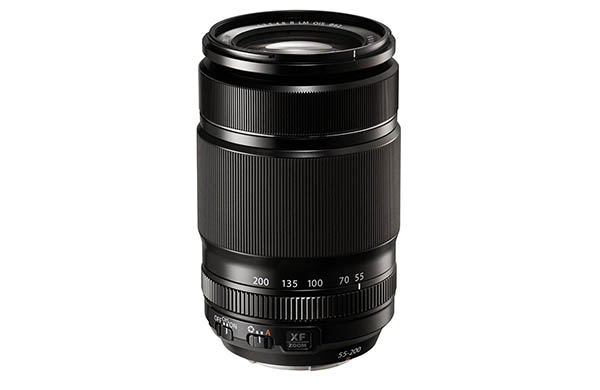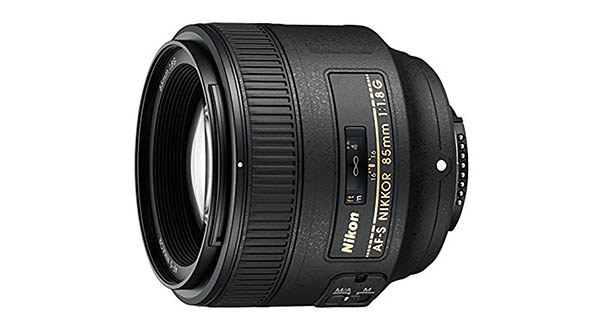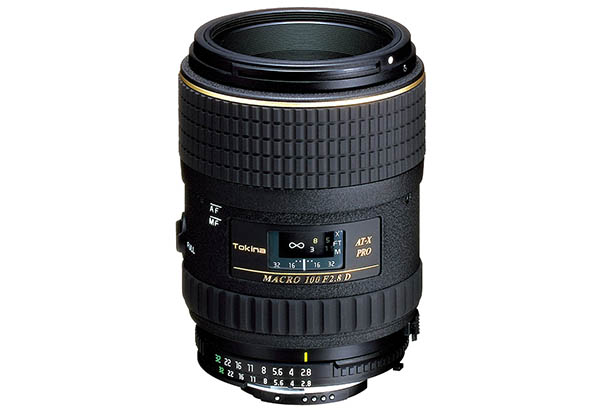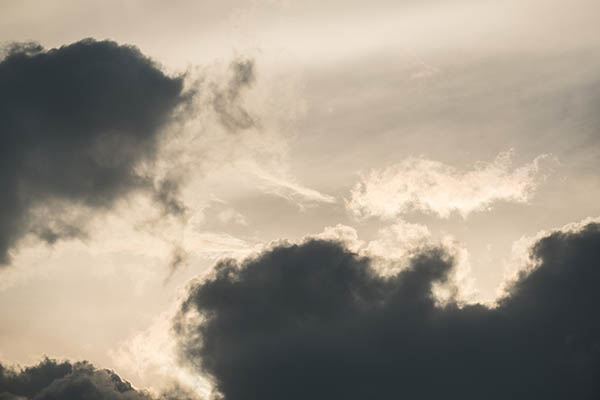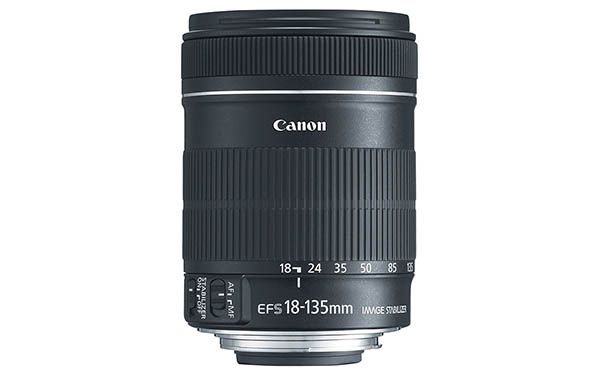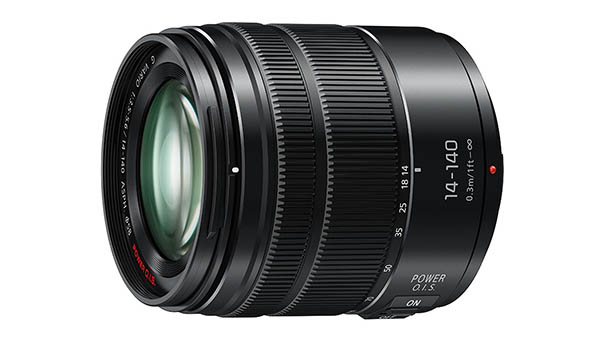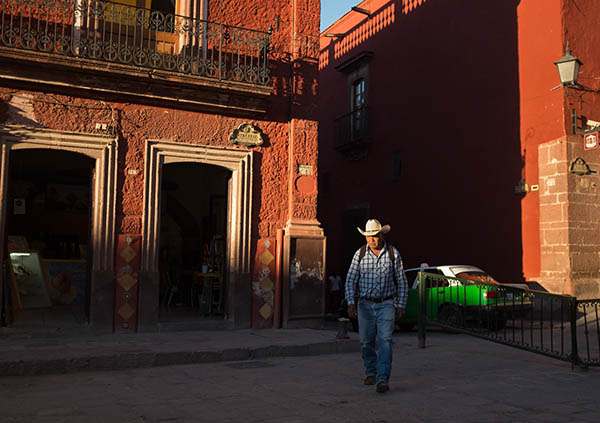Do you find the hundreds of lens purchasing options overwhelming? Are you ready to buy new camera lenses but have no idea where to start? In this tutorial you will learn about the 11 major types of DSLR and Mirrorless lens categories, such as wide and super-wide angle lenses, prime lenses, 50mm normal lenses, standard zoom lenses, telephoto lenses, and many more.
You’ll also learn about specific lenses for Canon and Nikon DSLR cameras, as well as Sony, Fujifilm, Olympus and Panasonic Lumix mirrorless-style cameras. If your camera brand is not mentioned in this tutorial, don’t be concerned. The following information will also apply to any other brand of DSLR or mirrorless camera.
Have you ever looked at a camera lens and wondered why it has a number and an “mm” millimeter designation directly after the number? This is called the lens’ focal length, and it’s also how the camera industry labels their lenses.
There are many lens focal length combinations that you can choose from. The lower the millimeter (mm) number on your lens, the wider your picture will be. Below is a series of photos at the most common focal lengths:
14mm Super Wide
28mm Wide Angle
35mm Wide Angle
50mm “Normal” lens
85mm Telephoto (also known as zoomed-in)
200mm Telephoto (also known as zoomed-in)
300mm Super Telephoto (usually equal to or greater than 300mm)
Did you notice that the 14mm photo is very wide, and the 300mm photo looks like it was photographed through a telescope? The following chart gives a rough guide as to how lenses are described.
Before you learn about the specific lens categories, it’ll be useful to clarify camera terminology. The name DSLR is short for Digital Single Lens Reflex. Canon and Nikon are the leaders in this class of camera, however Pentax, Sigma, and others also have DSLR style cameras, or variations on the DSLR system.
A DSLR style camera has an internal mirror that flips up and down very quickly each time that you take a picture. The mirror is what allows you to see your potential photo through the camera’s eye-piece.
The term Mirrorless camera is now an accepted way to describe a camera system that has a removable lens, but does not have a DSLR style internal mirror. These cameras are rapidly gaining in popularity, and the major players are Fujifilm, Sony, Olympus, and Panasonic Lumix.
If your DSLR is called a Full Frame camera, that means that you have a 35mm camera sensor. Not to be confused with a 35mm lens, the size of a digital sensor in a full frame DSLR is approximately the same size as a traditional 35mm negative or slide film. The size of the sensor in this Nikon DSLR is approximately 35mm wide.
There are other cameras that are not full frame 35mm size. These are called APS-C size, and another type is called Micro Four Thirds. For this tutorial please find out if your camera is Full Frame, APS-C, or Micro Four Thirds. This chart shows the approximate dimensions for each of the three sensor sizes in millimeters. Keep in mind that there are slight dimensional size differences between camera manufacturers.
Canon DSLR Camera Lenses
The more expensive professional camera models are usually Full Frame size, such as the 5D and 6D camera series. Canon’s entry-level and amateur model cameras are usually the smaller APS-C size, such as the Rebel series, 60D, 7D, 77D, and 80D.
Canon’s Full Frame camera lenses are called “EF” lenses. Canon’s APS-C size camera lenses are called “EF-S” lenses.
Nikon DSLR Camera Lenses
As with Canon, the expensive and professional camera models are usually Full Frame size, and the consumer model cameras are usually the smaller APS-C size. Nikon’s Full Frame lenses are called “FX” lenses. Nikon’s smaller APS-C lenses are called “DX” lenses.
Fujifilm Mirrorless Camera Lenses
The X Series cameras and lenses by Fujifilm are all APS-C size.
Sony Mirrorless Camera Lenses
The a7 Series FE-mount cameras and lenses by Sony are all Full Frame size.
Olympus & Panasonic Lumix Mirrorless Camera Lenses
Both Olympus and Panasonic Lumix produce Micro Four Thirds size cameras and lenses.
To summarize, there are three classes of DSLR and mirrorless camera sizes: Full Frame (the largest), APS-C (middle size), and Micro Four Thirds (the smallest). Continue along with this tutorial after you find out what class of DSLR or mirrorless camera that you have.
In the following lens category explanations you will see links to various lenses within a specific lens category. Please remember that these links are not exhaustive. For each camera model, and within each lens category, there could be up to ten great purchasing options.
Be aware that when choosing a camera lens, contact the lens seller to make sure that the new lens will fit your camera model.
1. Purchase Your First DSLR Or Mirrorless Camera With A Kit Lens
The term Kit Lens refers to the lens that comes bundled with many DSLR and mirrorless cameras. These lenses are easy to use, inexpensive, and lightweight. If you plan to buy a new camera, the most cost-effective way to get both a camera body and lens is to buy them both together as a package.
If you plan to purchase a Canon Rebel or similar APS-C sized camera, the 18mm-55mm standard zoom lens usually comes with the camera. Kit lenses are usually in the range of wide-angle to normal view.
Nikon DSLR cameras also have kit lenses, and one of the most popular is the 18mm-55mm standard zoom lens. If you plan to purchase an APS-C sized Nikon DSLR, this is the lens that usually comes with the camera.
Sony has a line of Full Frame size cameras called the a7 Series, and they all have what Sony calls the FE-Mount. The Sony FE-Mount cameras are the a7, a7R, a7S, a7 II, a7R II, a7S II models. These cameras are usually available with a kit lens such as the 28mm-70mm standard zoom lens.
Fujifilm X Series mirrorless cameras have very good quality kit lenses such as the 18mm-55mm standard zoom lens. While more expensive than other kit lenses, these are often bought by professional photographers as a lightweight back-up lens.
Panasonic Lumix mirrorless cameras use Micro Four Thirds size lenses for their mirrorless camera bodies. The 14mm-42mm standard zoom is a popular kit lens with a Lumix camera body.
Olympus mirrorless cameras also use the Micro Four Thirds camera and lens size. An advantage to the Micro Four Thirds system is that often an Olympus lens can fit on a Panasonic Lumix camera, and vice versa. The Olympus 14mm-42mm standard zoom lens is a common pairing with an Olympus camera.
2. Use A Super Wide Zoom Lens For Dramatic Landscape Photography
Professional landscape or architectural photographers often have a super wide angle zoom lens in their camera bag. A super wide zoom lens allows the photographer to get as much of the scene into the shot as possible. This photo is an example of a super wide zoom lens set at a focal length of 12mm.
Because of the lens’ zoom capabilities, you’ll be able to zoom from a very wide-angle view to what is called a wide-angle view. Canon makes a 10mm-18mm super wide-angle zoom lens that fits any APS-C size Canon DSLR, such as the Canon Rebel series.
Nikon also makes a super wide-angle zoom lens, and their version is a 10mm-24mm lens that fits any of their APS-C size camera bodies.
3. For Sharpness And Lighter Weight Use A Super Wide Prime Lens
The term prime lens refers to a lens that cannot zoom. Prime lenses are usually lighter weight, sharper, smaller, and often less expensive than zoom lenses.
So far you have been learning about zoom lenses that have a range such as 10mm-24mm. A super wide prime lens only has one ‘mm’ designation, such as this Sony FE/E-Mount 14mm lens.
Did you notice that this lens for Sony a7 mirrorless cameras was actually not manufactured by Sony? Samyang is a third party lens manufacturer that creates lenses for Sony, Canon, Nikon, and many other camera companies.
The term third party refers to lenses that fit many different camera brands, but are actually manufactured by a completely separate corporation. The most common third party lens manufacturers are Sigma, Tamron, Tokina, Rokinon and Samyang.
Third party lenses are often more affordable than first party lenses made by the major camera manufacturers. While there’s nothing wrong with buying a third party lens, make sure that you ask the seller if your exact camera model will fully work with whatever lens you choose.
4. Use A Standard Zoom Lens For Vacation And Travel Photography
A standard zoom lens has a range that goes from a wide-angle view to a slight telephoto view. For example, this is a wide-angle view from a standard zoom lens:
The term zoomed-in refers to changing your zoom lens from a wide-angle view all the way to the lens’ maximum telephoto view.
Standard zoom lenses are a great choice for travel and vacation photography, as you’ll be able to get many different types of photos using only one lens. Often it’s inconvenient to switch lenses while traveling, which is why the standard zoom lens is very popular. Nikon makes a 24mm-85mm standard zoom lens for their Full Frame FX cameras that’s ideal for traveling.
5. Use A Wide Angle Prime Lens For Street Photography
Zoom lenses are convenient because you can photograph many different views with a single lens. Prime lenses only give you a single view, so they’re not as convenient as zoom lenses. Why bother with wide-angle prime lenses then? They are usually smaller, lighter, sharper, and less expensive than wide-angle zoom lenses.
Wide-angle prime lenses are the favorites of street photographers. Street photography is an art form where the photographer records the drama of people going about their daily lives. If you would like to follow in the footsteps of such photographic masters as Henri Cartier-Bresson or Robert Doisneau, a wide-angle prime lens is for you.
The Olympus Micro Four Thirds camera system has a 17mm wide-angle prime lens that works well for not only street photography, but also architecture and landscape photography.
If you own a Canon Rebel series camera or other APS-C size Canon DSLR, this small 24mm lens is fantastic for street photography. Because the lens is so thin and small, people on the street won’t feel as self-conscious as they may with a very large zoom lens.
6. Use A 50mm “Normal Lens” For Recording What Your Eyes See
50mm is a similar focal length as what the human eye sees when our eyes are open, and focused on an object. If you want to faithfully photograph a scene the way that your eyes see it, the 50mm lens is a good choice. This is an example of a 50mm focal length view:
Nicknamed the Nifty Fifty, or a Normal lens, the 50mm lens is highly prized by professional photographers. The lens is one of the sharpest you can buy, it’s relatively inexpensive, it’s small, lightweight, and it also allows a lot of light into your camera.
For Nikon APS-C size cameras, the following lens is both inexpensive and very good quality. Even though the lens says 35mm, it’s actually a 50mm view. Because APS-C size lenses are smaller than Full Frame lenses, you can multiply your APS-C lens focal length by 1.5 to figure out what the actual focal length is.
For example, a 35mm APS-C size lens multiplied by 1.5 = a 50mm view. Take a look at the lens naming chart again, and you will see that a 50mm Full Frame lens has the same view as a 35mm APS-C lens, and a 25mm Micro Four Thirds lens.
Compare the 35mm APS-C size Nikon lens above to this 50mm Full Frame Nikon lens below:
Even though one lens says 35mm, and the other lens says 50mm, both lenses will give you the same view when both cameras photograph the same scene. Use the 35mm lens on an APS-C size Nikon, and the 50mm lens on a Full Frame size Nikon.
7. Use Telephoto Zoom Lenses For Sports
If your favorite sports arena allows you to take photographs during a game, a telephoto zoom lens is a good choice to get close to the action. Because you’ll probably be photographing from the bleachers, a zoomed-in view will allow you to see the players. Think of telephoto zoom lenses as zoom-able telescopes.
For Fujifilm X Series camera users, this 55mm-200mm telephoto zoom lens will get you close to the action. If you want to see a lot of the arena, choose a lower millimeter (mm) number such as 55mm. If you want to zoom in very close on just one athlete, choose the highest millimeter (mm) number such as 200mm.
8. Use Telephoto Prime Lenses For Low-Light Scenes
Concert photographers love telephoto prime lenses, as prime lenses usually work better in low-light areas than telephoto zoom lenses. As mentioned previously, sometimes prime lenses are sharper, smaller, lighter, and less expensive than their zoom counterparts. Telephoto prime lenses also work well for street photography.
This Nikon 85mm telephoto prime lens works for both Full Frame Nikon FX cameras as well as smaller Nikon APS-C size DX cameras. With a Full Frame camera, the view that you’ll see is 85mm. If you use this lens on an APS-C size Nikon camera, your view will be equivalent to a 128mm lens.
Tokina is a respected third party lens manufacturer, and their lenses usually work for both Full Frame and APS-C size Canon cameras.
9. Use Full Range Zoom Lenses For Maximum Convenience
Full range zoom lenses cover almost all focal length ranges, from wide-angle views all the way to telephoto or even super telephoto views. This type of lens is meant for those who don’t want to change lenses on their camera. Traditionally this type of lens has a range of 24mm at the wide view, up to 200mm at the telephoto view.
This is an example of the widest end of a full range zoom lens, set at the 24mm mark:
This is an example of the telephoto end of a full range zoom lens, set at the 200mm mark:
You may ask why doesn’t everyone use this type of lens, as it can see almost every focal length view? The advantage is the convenience of only needing one lens, however there are a few disadvantages with a full range zoom lens. The lenses are long and sometimes heavy, and they’re not as sharp as smaller lenses. You also often need to use a tripod when the lens is zoomed-in to a telephoto view.
Canon’s full range zoom lens is well made and does a fairly good job of avoiding the above-mentioned disadvantages. The lens is an EF-S 18mm-135mm zoom, which compared to a full frame lens view would be equivalent to 29mm-216mm. With that zoom range you may never choose to remove your lens again!
For Panasonic Lumix mirrorless camera users, this 14mm-140mm full range zoom lens is relatively small and light. Compared to a full frame lens view, this lens would be equivalent to approximately 28mm-280mm.
10. Use A Super Telephoto Zoom Lens For Wildlife Photography
A super telephoto zoom lens is popular with safari and other wildlife photographers, as the lens can zoom-in close to objects that are very far away. Wether you are planning an African photo safari, or like to photograph birds in your backyard, a zoom lens like this Nikon-mount Tamron 150mm-600mm will get you close to the wildlife.
11. Use A Super Telephoto Prime Lens For Astrophotography And Wildlife
With a lack of zoom ability there are fewer mechanical parts inside a prime lens. With a simpler construction, prime lenses, especially super telephoto prime lenses, can be lighter, smaller, cheaper, and potentially sharper than an equivalent focal length zoom lens.
This Canon 400mm super telephoto prime lens is ideal for astrophotography (photographing night sky details), as well as wildlife photographers who carry their camera gear in their backpacks. As prime lenses are usually lighter than zoom lenses, backpackers prefer lenses like this Canon.
Summary Of Lens Types
Now that you’ve read through the descriptions of the main lens types, here is a cheat-sheet summary to help you in your future lens purchasing choices.
Kit lenses: Inexpensive and lightweight, these lenses are great for hiking and general photography. Kit lenses usually come bundled with consumer-level DSLR or mirrorless camera bodies.
Super wide zoom and super wide prime lenses: These lenses are great for architecture and landscape photography.
Standard zoom lenses: Good for travel and general walk-around photography, these are popular lens choices.
Wide angle prime lenses: These lenses are very good for street photography.
50mm normal lens: Similar to what your eyes see, this lens is great for documentary photography.
Telephoto zoom and telephoto prime lenses: These lenses are great for sports and wildlife photography.
Full range zoom lenses: These lenses are excellent for travel, as no lens changing is needed.
Super telephoto zoom and prime lenses: These are very good lenses for sports, astrophotography and wildlife photography.
Think of various lenses as different types of brushes that an artist would use. Each brush has a unique ability to apply paint to the canvass. Similarly, each lens has its own unique light-gathering characteristic, which allows for a high amount of creative expression. Enjoy experimenting with different lenses, and remember to have fun with your DSLR or mirrorless camera!




